At a recent Lunch-n-Learn organized by the Arizona Technology Council, I had the opportunity to speak for 10 minutes on 3D printing. I decided to focus my talk on trying to answer one question: how can I determine if 3D printing can benefit my business? In this blog post, I attempt to expand on the ideas I presented there.
While a full analysis of the Return-On-Investment would require a more rigorous and quantitative approach, I believe there are 5 key drivers that determine the value proposition for a company to invest in 3D printing, be it in the form of outsourced services or capital expenditure. If these drivers resonate with opportunities and challenges you see in your business, it is likely that 3D printing can benefit you.
1. Accelerating Product Development
3D printing has its origins in technologies that enabled Rapid Prototyping (RP), a field that continues to have a significant impact in product development and is one most people are familiar with. As shown in Figure 1, PADT’s own product development process involves using prototypes for alpha and beta development and for testing. RP is a cost- and time effective way of iterating upon design ideas to find ones that work, without investing in expensive tooling and long lead times. If you work in product development you are very likely already using RP in your design cycle. Some of the considerations then become:
- Are you leveraging the complete range of materials including high temperature polymers (such as ULTEM), Nylons and metals for your prototyping work? Many of these materials can be used in functional tests and not just form and fit assessments.
- Should you outsource your RP work to a service bureau or purchase the equipment to do it in-house? This will be determined by your RP needs and one possibility is to purchase lower-cost equipment for your most basic RP jobs (using ABS, for example) and outsource only those jobs requiring specialized materials like the ones mentioned above.
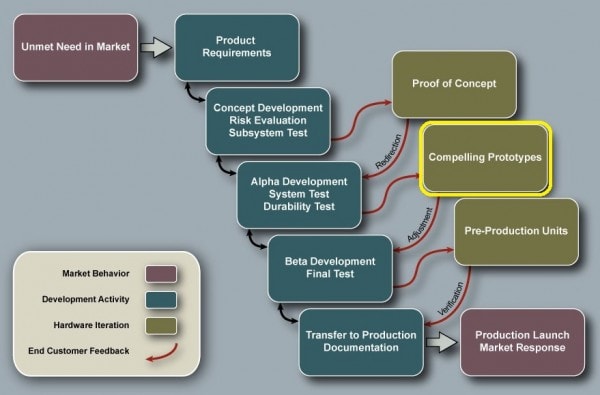
The video below contains several examples of prototypes made by PADT using a range of technologies over the past two decades.
2. Exploiting Design Freedom
Due to its additive nature, 3D printing allows for the manufacturing of intricate part geometries that are prohibitively expensive (or in some cases impossible) to manufacture with traditional means. If you work with parts and designs that have complex geometries, or are finding your designs constrained by the requirements of manufacturing, 3D printing can help. This design freedom can be leveraged for several different benefits, four of which I list below:
2.1 Internal Features
As a result of its layer-by-layer approach to manufacturing a part, 3D printing enables complex internal geometries that are cost prohibitive or even impossible to manufacture with traditional means. The exhaust gas probe in Fig. 2 was developed by RSC engineering in partnership with Concept Laser has 6 internal pipes surrounded by cooling channels and was printed as one part.
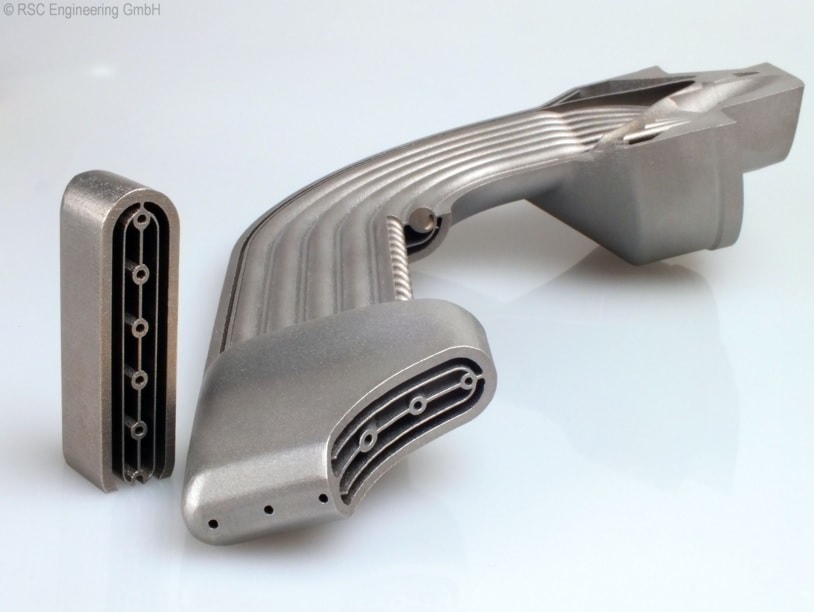
2.2 Strength-to-Weight Optimization
One of the reasons the aerospace industry has been a leader in the application of 3D printing is the fact that you are now able to manufacture complex geometries that emerge from a topology optimization solution and reduce component weight, as shown in the bracket manufactured by Airbus in Figure 3.
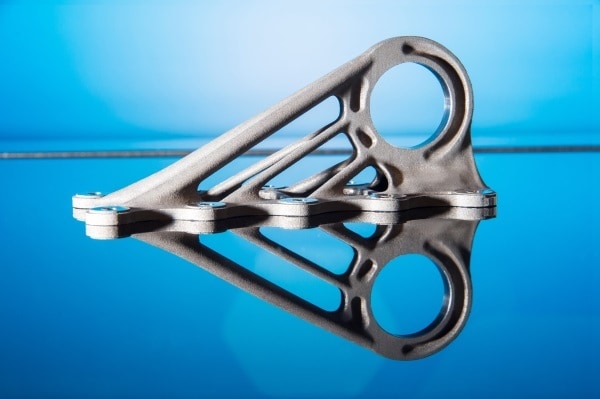
2.3 Assembly Consolidation
The ability to work in a significantly less constrained design space also allows the designer to integrate parts in an assembly thereby reducing assembly costs and sourcing headaches. The part below (also from Airbus) is a fuel assembly that integrated 10 parts into 1 printed part.
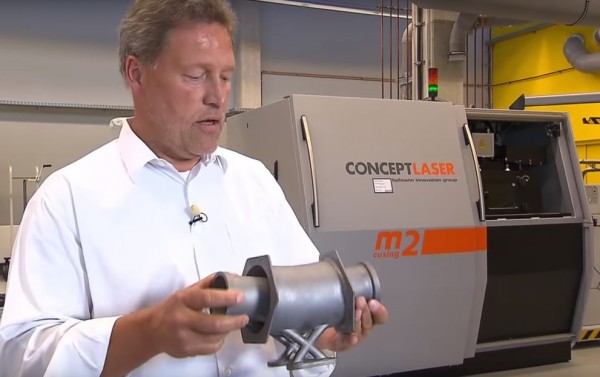
2.4 Bio-inspiration
Nature provides several design cues, optimized through the process of evolution over millenia. Some of these include lattices and hierarchical structures. 3D printing makes it possible to translate more of these design concepts into engineering structures and parts for benefits of material usage minimization and property optimization. The titanium implant shown in Figure 5 exploits lattice designs to optimize the effective modulus in different locations to more closely represent the properties of an individuals bone in that region.
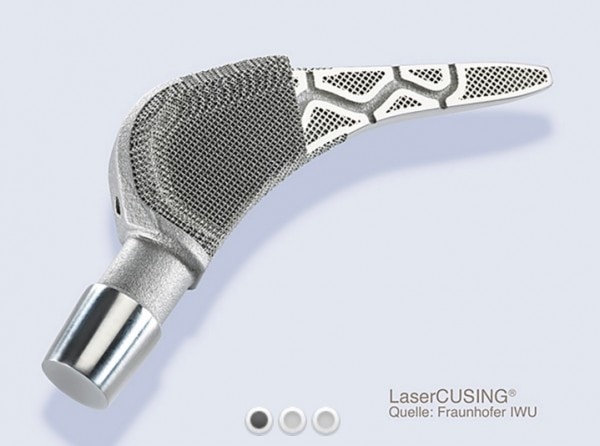
3. Simplifying the Supply Chain, Reducing Lead Times
One of the most significant impacts 3D printing has is on lead time reduction, and this is the reason why it is the preferred technology for “rapid” prototyping. Most users of 3D printing for end-part manufacturing identify a 70-90% reduction in lead time, primarily as a result of not requiring the manufacturing of tooling, reducing the need to identify one or more suppliers. Additionally, businesses can reduce their supplier management burden by in-sourcing the manufacturing of these parts. Finally, because of the reduced lead times, inventory levels can be significantly reduced. The US Air Force sees 3D printing as a key technology in improving their sustainability efforts to reduce the downtime associated with aircraft awaiting parts. Airbus recently also used 3D printing to print seat belt holders for their A310 – the original supplier was out of business and the cost and lead time to identify and re-tool a new supplier were far greater than 3D printed parts.
4. Reducing Costs for High Mix Low Volume Manufacturing
According to the 2015 Wohlers report, about 43% of the revenue generated in 3D printing comes from the manufacturing of functional, or end-use parts. When 3D printing is the process of choice for the actual manufacturing of end-use parts, it adds a direct cost to each unit manufactured (as opposed to an indirect R&D cost associated with developing the product). This cost, when compared to traditional means of manufacturing, is significantly lower for high mix low volume manufacturing (High Mix – LVM), and this is shown in Figure 6 for two extreme cases. At one extreme is mass customization, where each individual part has a unique geometry of construction (e.g. hearing aids, dental aligners) – in these cases, 3D printing is very likely to be the lowest cost manufacturing process. At the other end of the spectrum is High Volume Manufacturing (HVM) (e.g. semiconductor manufacturing, children’s toys), where the use of traditional methods lowers costs. The break-point lies somewhere in between and will vary by the the part being produced and the volumes anticipated. A unit cost assessment that includes the cost of labor, materials, equipment depreciation, facilities, floor space, tooling and other costs can aid with this determination.
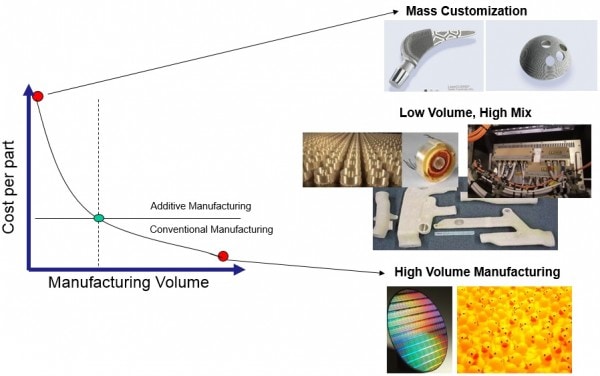
5. Developing New Applications
Perhaps the most exciting aspect of 3D printing is how people all around the world are using it for new applications that go beyond improving upon conventional manufacturing techniques. Dr. Anthony Atala’s 2011 TED talk involved the demonstration of an early stage technique of depositing human kidney cells that could someday aid with kidney transplants (see Figure 7). Rarely does a week go by with some new 3D printing application making the news: space construction, 3D surgical guides, customized medicine to name a few. The elegant and intuitive method of building something layer-by-layer lends itself wonderfully to the imagination. And the ability to test and iterate rapidly with a 3D printer by your side allows for accelerating innovation at a rate unlike any manufacturing process that has come before it.
![The 3D Printing Value Proposition 7 Dr. Anthony Atala showing a 3D printed kidney [Image Attr. Steve Jurvetson]](https://www.padtinc.com/wp-content/uploads/2022/02/3dpvp_kidney-e1454108946725.jpg)
Conclusion
As I mentioned in the introduction, if you or your company have challenges and needs in one or more of the 5 areas above, it is unlikely to be a question of whether 3D printing can be of benefit to you (it will), but one of how you should best invest in it for maximum return. Further, it is likely that you will accrue a combination of benefits (such as assembly consolidation and supply simplification) across a range of parts, making this technology an attractive long term investment. At PADT, we offer 3D printing both as a service and also sell most of the printers we use on a daily basis and are thus well positioned to help you make this assessment, so contact us!


















